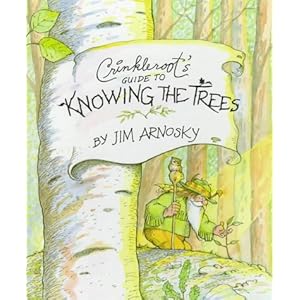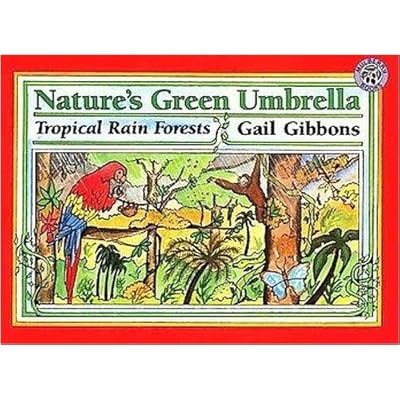Trees have always provided us with essentials to life: both food and oxygen. As technology has advanced trees have been used more and more, for shelter, medicine and tools. Trees improve our air quality, conserve water, preserve soil, and support wildlife. According to the U.S. Department of Agriculture, “One acre of forest absorbs six tons of carbon dioxide and puts out four tons of oxygen. This is enough to meet the annual needs of 18 people.” Trees control climate by moderating the effects of the sun, rain and wind. Clearly, trees are a very important resource to humans and the entire world. As more and more forest land is cut down, we need to educate the next generation about the importance of trees. These resources can be used for SOLs from all grade levels having to do with plant structure, life cycles, needs, recycling, animal habitats, and erosion (k.6b, 1.4 a-c, 1.7a, 2.4b, 2.7b, 3.4a, 4.4a, 5.7e,f).
Books:
The Great Kapok Tree: A Tale of the Amazon Rainforest by Lynne Cherry

This book is a great story about a man who is going to chop down a Kapok tree in the rainforest. He decides to take a nap and while he is asleep all the animals that live in and depend on this tree- snakes, butterflies, a jaguar, and a child, come to him and whisper all the reasons not to cut down the tree. It really shows the interconnectedness of all living things. When he wakes up and sees all the animals around him he decides not to chop down the tree and walks out of the forest. This beautifully illustrated book speaks to the importance of conservation as well as related subjects such as endangered animal species.
Crinkleroot’s Guide to Knowing Trees By Jim Arnosky
 This book is one of a great series of guide books for kids on nature. Crinkleroot is a loveable, wise, old man who explains about trees along his walk through the woods. He details the difference between hardwoods and conifers, and gives detail skecthes of the different types of leaves. He tells about why we need a rich diversity of different types of trees to provide shelter and food for animals. He even talks about the role that dead trees take in the forest, as well as how seedlings and saplings grow and factors affecting their development. With rich watercolor illustrations, and information dense text, this succint book will engage and activate curiosity in students. Also check out, I Was Born in a Tree and Raised by Bees and Crinkleroot’s Guide to Walking in Wild Places by the same author.
This book is one of a great series of guide books for kids on nature. Crinkleroot is a loveable, wise, old man who explains about trees along his walk through the woods. He details the difference between hardwoods and conifers, and gives detail skecthes of the different types of leaves. He tells about why we need a rich diversity of different types of trees to provide shelter and food for animals. He even talks about the role that dead trees take in the forest, as well as how seedlings and saplings grow and factors affecting their development. With rich watercolor illustrations, and information dense text, this succint book will engage and activate curiosity in students. Also check out, I Was Born in a Tree and Raised by Bees and Crinkleroot’s Guide to Walking in Wild Places by the same author.
Forest Explorer: A Life Size Field Guide By Nic Bishop

When encouraging outdoor exploration, Forest Explorer is a must. This field guide built for miniature naturalists, shows real, oversized photographs of common animals and insects living in the forest. It has a critter index in the back with pictures, tips for things to look for in all seasons, and many other hints that excourage students to get out there and get dirty exploring the forest!
Nature’s Green Umbrellas by Gail Gibbons

This book, using great watercolor illustrations entice students to become a part of the rainforest while learning with straightforward text. The ecology of the rainforest is discussed, with simple definitions of terms and labeled animals. Global warming and the danger of destruction of the rainforest and its potential impact on the world are discussed as well. The author also suggests methods for reducing damage to the rainforests from cutting. This is a great book to give students an introduction to the rainforest and the issues associated with it.
A Tree is a Plant by Clyde Robert Bulla, illustrated by Stacy Schuett

From the Lets Read and Find Out leveled readers series, this book shares a breif overview of general tree knowledge and then focuses on the apple tree to show its parts and functions, as well as its seasonal changes. The author uses direct and simple language. Impressionistic illustrations engage the eye while also show the functions of the plant like with arrows indicating the water intake route. This book features large pictures, with a diverse group of kids in the outdoor scenes. Extension acitivities are included in the back like a transpiration experiment and measuring the age of a tree.
Student Resources:
A Walk in the Woods is a great website acitivity with visual pictures, sound, and text educating kids on different things they can find in the woods. This would be a great precursor to a real walk in the woods. This would give hte kids some great ides on what to look for.
What Tree is That? This interactive tools allows students to practice identifying features of different trees when given a mystery tree sample.
Exploring the Secret Life of Trees This interactive presentation goes through the basic stucture of trees and what they need to survive. The student learn about the root system and have to stack soda cans to represent how deep roots grow. With the same host- Pierre the acorn, also try Trees are Terrific.
Dichotomous Tree Key is an interactive site where kids can choose the feature of their tree and see what species they end up with. This illustrates all the factors that are considered when trying to identify tree types.
SmokeyKids has information and several interactive features and games having to do with forest fires, prevention and how they put forest fires out. I especially like the Smoke Jumpers game, where students put fires out before they burn all the trees.
Teacher Resources:
Real Trees 4 Kids Printable Teacher guides
This website created by the National Christmas Tree Council has leveled lessons for all age groups having to do with tree farming and trees in general. There are many great actvitities, especially in the grades 3-5 section such as classifying trees, growing cycles, and recycling. More childrens’ literature suggestions are found here as well.
Tree Cookies/My Life as a Tree This a great classic lesson showing students how to count how old a tree is. They can also see for themselves the cambium, bark and hardwood. They then will create their own tree cookie on a paper plate to represent their own lives (with the same number of rings as their age). They will label all the parts that would be on a real tree cookie, but also major events of their life on the appropriate ring year. This could also be a great brainstorming activity for a narrative writing assignment.
Tree Kit by University of Illinois has many many lesson plan ideas to do with all things related to trees. There are three units with over 15 lessons/activities to explore. One I liked in particular is Dead and Alive showing how the animals and plants around a dead tree still use it to help them flourish.
Tree Chain Game This lesson explores all the things that seeds need in order to germinate and grow into a seedling and then into a tree. Student learn that they have to have a certain order. They then play a game where each student is assigned a “need” or a “seed” card. The “seeds” have to run between two areas playing a memory type game to try to collect all their needs in the correct order. Once they find their next need that student has to run with them making a chain until all the needs are collected.
